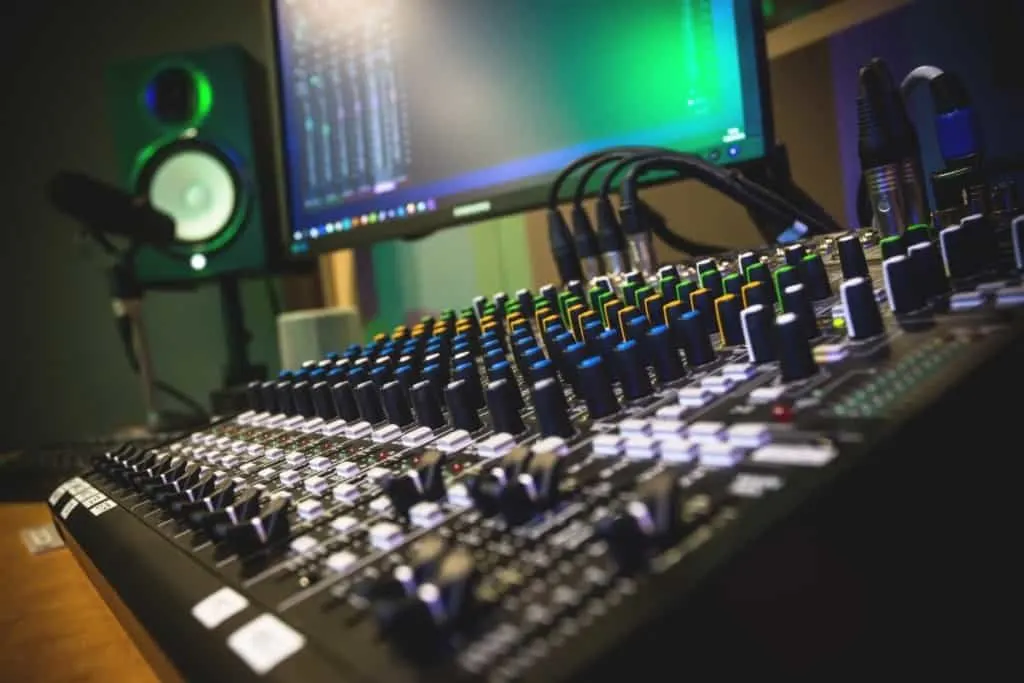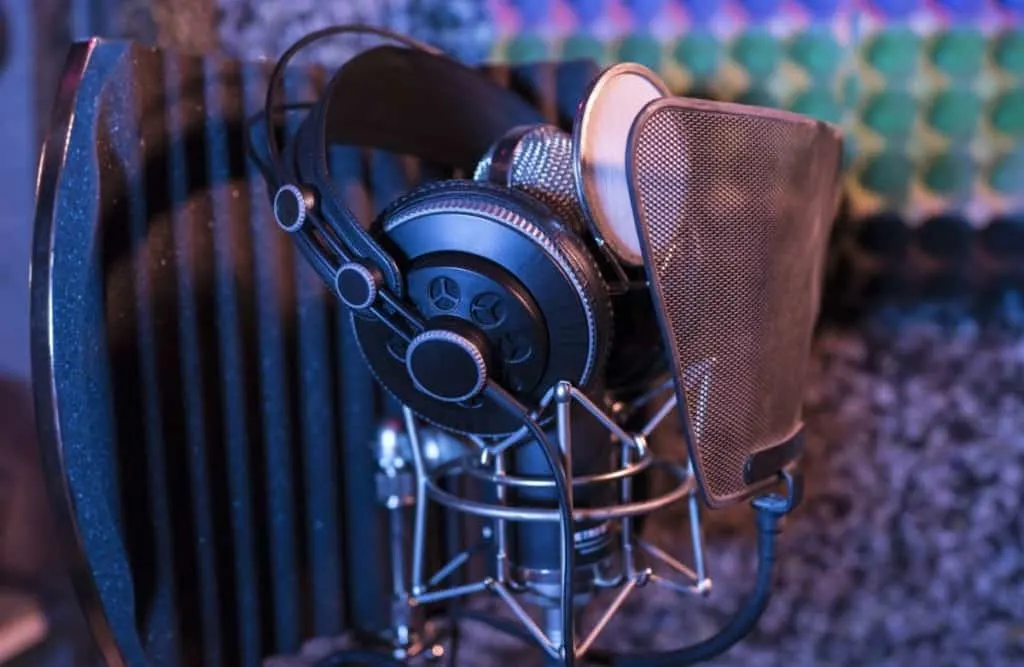Within an audio-playback or recording setup, there are many devices and components that can be employed to get the best results. One common type of device used is power conditioners.
Do power conditioners improve sound quality?
Power conditioners target the 50-60Hz sine wave produced by the mains supply and boost its clarity. This frequency range is prone to noise and instability, so the power conditioner removes all of the distortions, therefore improving sound quality.
Power conditioners improve sound quality mainly through their interactions with the mains supply.
One of the most common causes of poor sound quality, whether during playback or recording, is electronic noise. Power conditioners effectively clean up the frequency range that is most likely to be marred by hum or buzz, and they also protect electronics from mains-supply surges. This makes the audio sound clearer and more accurate.

How Power Conditioners Improve Sound Quality
Power conditioners are used for several purposes.
Their main goal is to eradicate any power-related noise from an audio system. This results in low-end sound quality being improved. Although the improvement in sound quality is usually subtle, it makes a significant difference in high-end audio setups, whether solely for playback or for recording and mixing purposes.
Check out this popular sound conditioner here on Amazon
Theoretically, a power conditioner improves sound quality by taking the mains signal and converting it into a cleaner, new version in the form of an AC signal. It is especially effective when used with audio equipment that tends to be sensitive to the voltage output of a power source.
When employed in a hi-fi system, a power conditioner will simply improve the quality of audio playback by changing the low-end frequencies which are susceptible to electronic distortion and unwanted noises into pristine sine waves, with minimal or no distortion. This results in the whole of the audio receiving a boost in clarity.
In addition to taking care of the frequencies between 50-60Hz and removing any distortion from the signal, power conditioners also perform some other vital practices that cause improvements to the overall quality.
One of these functions is protecting the various components within an audio system from any spikes or surges from the mains supply.
This function is pivotal in the recording process, where takes can be ruined by unexpected fluctuations from the mains power.
If, for example, you are recording audio and another electronic device is switched on or off, this can cause a surge in the mains voltage which will be heard in the recording as clipping or a sudden pop.
Additionally, another purpose of power conditioners that ultimately improves sound quality is the isolating ground lines from each other.
This helps to prevent an undesirable occurrence known as hum loops. These loops are common in live-sound settings when there are various ground lines on a stage or running through a venue. By minimizing the risk of the ground loops, the overall audio quality is preserved.
Check out this video that discusses great reasons to own a power conditioner.
Situations When Power Conditioners Don’t Improve Sound Quality
We’ve established that power conditioners are great at improving sound quality when recording or employing them in a live-sound setup. However, there are some cases where using a power conditioner is unlikely to make much of a difference to overall quality.
Like all audio equipment, there is much variation between the different models of power conditioners available on the market. The more high-end, complex conditioners are likely to dramatically out-perform their cheaper counterparts, and provide more benefits.
Basic power conditioners are only really effective for use with specific audio equipment. They are likely to be less accurate than the high-end models, exclusively performing the function of minimizing line noise.
One scenario where a power conditioner is unlikely to improve sound quality is if you use them with modern amplifiers.
Many state-of-the-art amps include switch-mode power supplies. These devices are chosen because they add very little weight to the amplifier, in comparison to a vintage analog amp which is likely to weigh up to ten times more than modern versions.
Power conditioners will have minimal impact on the sound quality produced by these amps for several reasons.
The amplifier’s switch power mode supply isn’t picky about the mains signal that it receives. Even a distorted, noise-ridden mains signal will be taken by the switch power mode.
Square waves are also accepted, and supply frequency doesn’t make a difference to these devices. The downside to this type of amplifier is that it is likely to cause the power rails to be noisy.
- The only exception to this rule is if you are using an external power generator or inverter supply that is powered by a battery.
It’s imperative to use a power conditioner with either of these devices, even if you are using a modern amp fitted with a switch power mode.
The conditioner will provide valuable protection to your gear from any spikes or square waves produced by the generator or inverter. Although modern equipment can rarely be damaged by electrical problems, it is still a possibility.
If a power surge runs through audio equipment, it can result in permanent damage and diminishment of sound quality.
To summarize, a power conditioner can be used for the following purposes to improve sound quality:
- Regulate auto voltage for sensitive audio equipment
- Protect equipment from damage caused by voltage spikes
- Remove the interference from wires
- Suppress electronic noise around 40-50 Hz
- Prevent electrical transformers from overheating

Auto Voltage Regulators And Pulse Protectors
The term power conditioner doesn’t describe a specific device but is rather an umbrella term that includes various conditioners.
Within the category of power conditioners, there are devices such as auto voltage regulators, pulse protectors, and more sophisticated energy sources that synthesize a sine wave output voltage.
These different types of power conditioners ensure that the signal integrity is protected, and therefore they improve the sound quality.
When the dirty electronic voltage enters the conditioner from the AC power supply, any high-voltage impulses are suppressed by the pulse protector. This ensures that the sound quality doesn’t suffer due to undesirable electronic noise.
Another function of a power conditioner that helps to preserve sound quality is its ability to break the connection with the input line in the case of extremely high voltages or when signal quality is significantly compromised. The conditioner interrupts the connection and protects the audio device from damage.
Power Strips vs. Power Conditioners
Power strips and power conditioners are often categorized together.
Although these devices perform similar functions, there are significant differences in how they operate.
Power strips essentially take one power outlet and expand it into several outlets. They are often fitted with a switch for resetting the signal.
These devices don’t cause improvements in sound quality like power conditioners do. They do, however, protect from power surges using EMI/RFI shielding.
- The reason it may be necessary to use power strips instead of a power conditioner is due to the additional outlets they provide.
It’s worth noting that many of the outlets do not offer surge protection. If the power overloads, the strip automatically turns off to protect all of the devices connected.
With that being said, if a dramatic power surge occurs, this can cause the strip to be damaged or in some cases, even ignite.
Heavy-duty options prevent this from happening, as they are designed to withstand high levels of voltage surges. Although these will not directly improve sound quality as conditioners do, they will prevent damage to equipment.
Power conditioners are also great for removing ground loops. They have inbuilt isolated transformers that can remove the noise using common-mode rejection. Ground loops are one of the main causes of noise issues, so combating them is one of the best ways to improve overall sound quality.
A process known as digital filtering is also featured with some high-end power conditioners.
Digital filtering is the process of using internal components to treat power, reducing any unwanted noise, mishaps, or interference. These filters are very useful in live music situations where unreliable power sources are a possibility.
- In the table below you can see the differences between a power conditioner and a power supply unit.
| Power Conditioner | Power Supply Unit |
| Targets low-end frequencies | Converts high voltage to low voltage |
| Cleans up any electronic interruptions | Allows noise to pass through the PSU |
| Ideal for recordings/live sound | Prevents unwanted hum |
| Protects equipment from damage | Great for use with many other devices |
Related Questions
What is “dirty” power?
Dirty power is a term that describes an abnormality in power quality received by a system. These issues are caused by low power, variations in voltage, or fluctuations in frequencies.
Do audio interfaces need power conditioners?
Audio interfaces have inbuilt components that combat power issues. There are occasions where they become overloaded, but this is rare and can be solved by reducing the number of devices plugged into the interface.
I have written an article on how to get started with audio interfaces. You can read it here
Do unbalanced cables affect sound quality?
If unbalanced cables are used for transmitting balanced signals, the sound quality will be affected. Unwanted noise is likely to be present in the output, and unpredictable electronic buzz will occur. Balanced cables solve this problem.
Check out my article that discusses balanced and unbalanced cables. You can read it here
